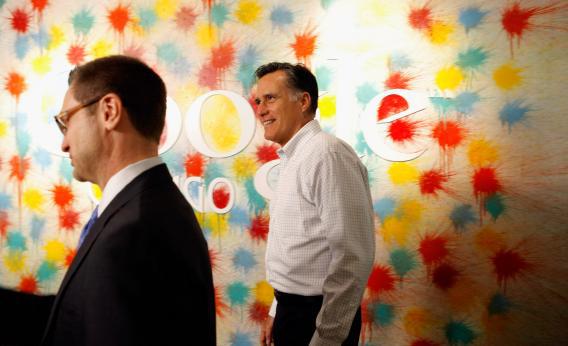I’ll be out reporting on an unrelated event tonight, not liveblogging the Illinois presidential primary. So I’ll spoil it for you: Mitt Romney will win. He will win the technically meaningless popular vote, and win the majority of the 69 delegates selected across Illinois’s 15 congressional districts.
We know this because Rick Santorum has basically conceded most of the vote and most of the state. On Saturday he campaigned in Efingham, Mt. Vernon, and Herron. On Monday he campaigned in Rockford, Dixon, Moline, and East Peoria. These are cities in the generically defined “downstate.” Santorum didn’t make a run at the Chicago area and its suburbs, which will probably cast 50 percent or more of the vote.
“Our campaign has a certain number of resources,” explained Santorum spokesman J. Hogan Gidley. “We know how to use them wisely – I think you can look at the 10 states we’ve won and see that. This is a big state, it’s expensive, and in the more moderate areas, Romney does better.” He shrugged. The campaign would “move on to the next state,” literally, as Santorum celebrates election night in Gettysburg, Penn.
Santorum can still take a few bites out of Romney in Illinois, and do better than Romney himself fared against John McCain eight years ago. But the real drama will come in congressional primaries, one of which will decide the fate of a once-rising, 34-year-old conservative star, two of which will test whether progressives can upset establishment candidates in Democratic primaries. The first race: Don Manzullo against Adam Kinzinger. The second and third races: primaries in the suburban 10th district and the mostly rural, sort of swingy 13th district.
8:20: The exit polls – just for the presidential race, sorry – reveal just how hard this race was going to be for Santorum. Fifty-seven percent of the vote comes from Chicago, suburban Cook County, or the collar counties. This vote goes for Romney by 20 points. Santorum’s winning downstate by 19 points, but downstate casts 13 percent of the vote. The preference vote is only in single digits because Santorum has a narrower lead in the northern, non-Chicagoland parts of the state.
But the preference poll is just that – fluff for the trivia book. What do we know about the electorate?
- For the umpteenth time, the Mormon guy has walloped two Catholics; Romney wins the Catholic vote 48-32 over Santorum. Santorum wins white evangelicals by a 47-35 margin.
- The silly debate over whether Rick Santorum “cares about unemployment”? Not much of a factor. Forty-six percent of voters, a plurality, think the economy is getting worse. Romney wins them by only 4 points. Romney wins everybody else by around 18 points.
- If this had been a two-man race, Romney would have pipped Santorum 46-42.
8:33: One dark note for Romney from the exit poll: Voters were given a choice between their candidate winning the primary, and the primary ending early. Sixty-six percent of voters preferred a drawn-out primary with their guy on top. Those voters split 40-40 between Romney and Santorum.
8:42: The networks call it: Mitt Romney wins the Illinois primary. We just need to do some painful math to figure out where, in downstate, Santorum did well enough to seize delegates.
